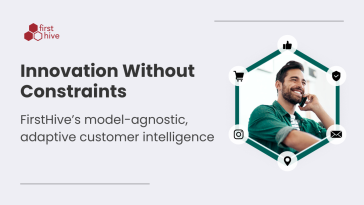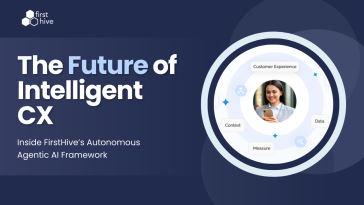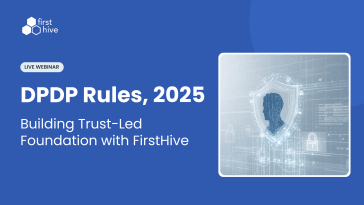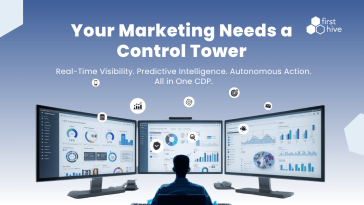In today’s digital age, understanding your customers and delivering personalized experiences is crucial for the success of any business. One powerful tool that helps achieve this is the 360-degree customer view data model. This blog post explores the importance and benefits of implementing a customer 360 strategy, as well as how it works and its various use cases.
What is Customer 360?
Customer 360 is a comprehensive approach to gathering, organizing, and analyzing customer data from various touchpoints to create a holistic view of each individual customer. It involves integrating data from multiple sources such as sales, marketing, customer service, and more, to create a centralized customer profile.
Why Does Customer 360 Matter?
Customer 360 is vital for businesses looking to deliver personalized experiences and build long-lasting customer relationships. By having a complete understanding of each customer, organizations can tailor their marketing campaigns, product recommendations, and customer service interactions to individual preferences and needs.
How Customer 360 Works
In today’s digital age, businesses have access to an abundance of customer data from various sources. However, this data is often scattered across different platforms and systems, making it difficult for businesses to get a comprehensive understanding of their customers. This is where Customer 360 comes into play.
Customer 360 is a strategy or tool that aims to collect and consolidate customer data from multiple sources into a single, unified view. This means gathering data from online and offline interactions, such as website visits, email communications, phone calls, in-store purchases, and more. It also includes information about customers’ purchase history, demographic details, social media engagement, and any other relevant data points.
By bringing all this data together, businesses can create a holistic view of each customer. This allows them to gain valuable insights into customer behavior, preferences, and patterns. For example, by analyzing the data, businesses can identify which products or services are most popular among certain customer segments, understand the channels through which customers prefer to engage with the brand, and even predict future buying patterns.
Having a comprehensive understanding of customers is crucial for businesses to make informed decisions and provide personalized experiences. With Customer 360, businesses can tailor their marketing strategies, improve customer service, and enhance overall customer satisfaction. For instance, they can send targeted promotions or recommendations based on customers’ past purchases or preferences, leading to higher conversion rates and customer loyalty.
Furthermore, Customer 360 enables businesses to identify potential gaps or areas for improvement in their customer journey. By analyzing the data, they can pinpoint pain points or bottlenecks in the customer experience and take necessary steps to address them. This can result in enhanced customer satisfaction and increased customer retention.
In conclusion, Customer 360 is a powerful tool that allows businesses to collect and consolidate customer data from various sources into a single, unified view. By analyzing this data, businesses can gain valuable insights into customer behavior, preferences, and patterns, enabling them to make informed decisions and provide personalized experiences. Ultimately, this can lead to improved customer satisfaction, increased customer loyalty, and ultimately, business growth.
Customer 360 Use Cases
The applications of customer 360 are vast and varied. Some common use cases include:
- Personalized Marketing: With a 360-degree view of each customer, businesses can segment their audience and deliver targeted marketing messages that resonate with individual preferences.
- Improved Customer Service: By understanding a customer’s history and preferences, businesses can provide more personalized and efficient customer service, leading to higher customer satisfaction.
- Product Recommendations: With insights into a customer’s purchase history and preferences, businesses can make accurate and relevant product recommendations, increasing cross-selling and upselling opportunities.
- Churn Prediction: By analyzing customer behavior and engagement patterns, businesses can identify early signs of customer churn and take proactive measures to retain them.
How to Implement Customer 360
Implementing a customer 360 strategy requires careful planning and the right tools. Here are some steps to consider:
- Define Goals and Objectives: Clearly define what you aim to achieve with customer 360. Determine the specific outcomes you want to drive through personalized customer experiences.
- Data Collection and Integration: Identify the sources of customer data and establish processes to collect and integrate data from various touchpoints. This may involve integrating CRM systems, marketing automation platforms, and other data sources.
- Data Quality and Governance: Ensure data accuracy, consistency, and compliance with data privacy regulations. Implement data governance practices to maintain data integrity.
- Analytics and Insights: Use advanced analytics tools to derive meaningful insights from customer data. Leverage machine learning and AI algorithms to uncover patterns and trends that can drive personalized experiences.
- Actionable Strategies: Develop strategies and campaigns based on the insights gained from the customer 360 data model. Implement personalized marketing, customer service, and product recommendation initiatives.
- Continuous Improvement: Monitor and measure the impact of your customer 360 efforts. Continuously refine and optimize your strategies based on customer feedback and evolving needs.
Conclusion
The 360-degree customer view data model is a powerful tool that enables businesses to understand their customers at a deeper level and deliver personalized experiences. By leveraging customer 360, organizations can drive customer satisfaction, loyalty, and ultimately, business growth. Embracing this data-driven approach is crucial in today’s competitive landscape.








